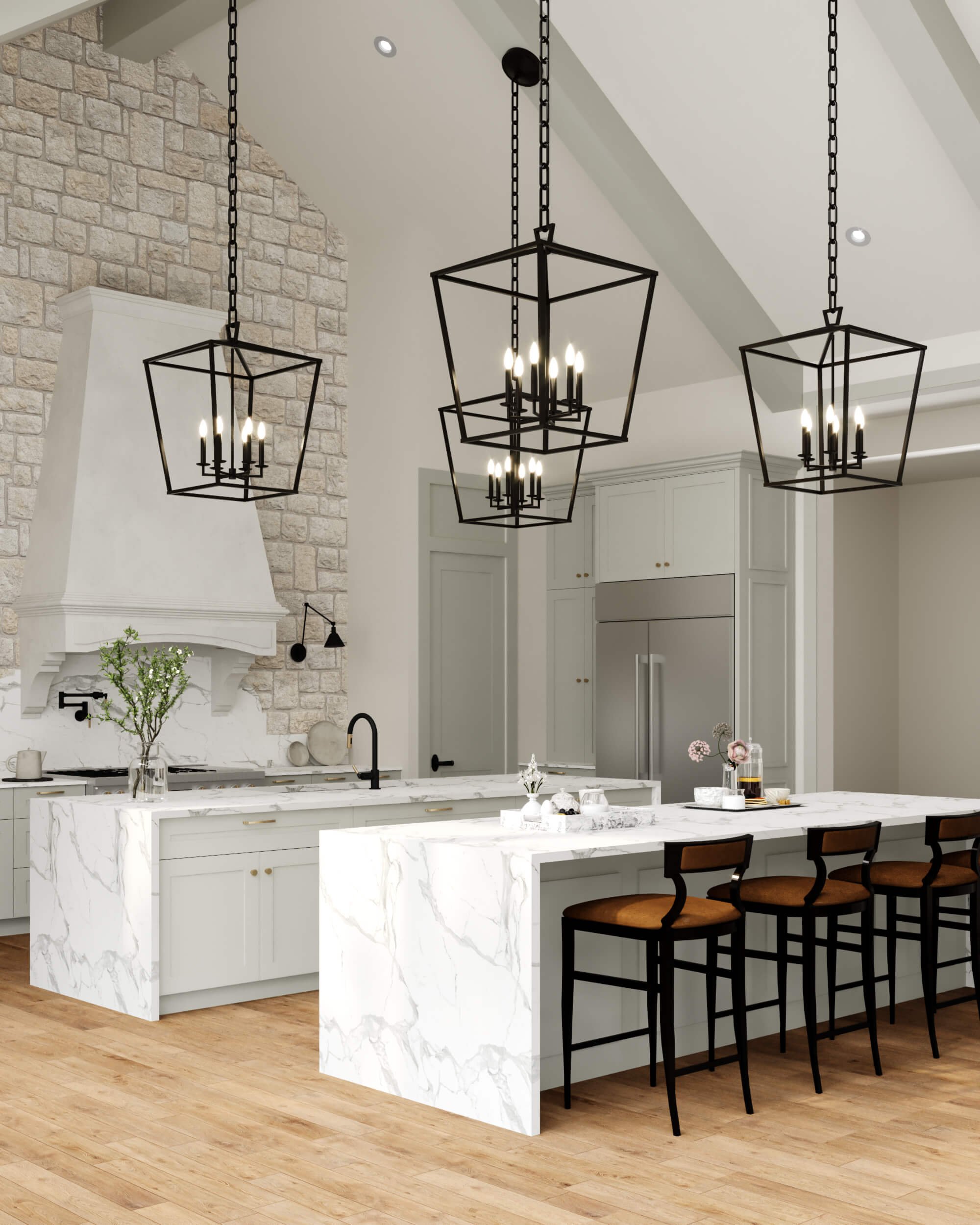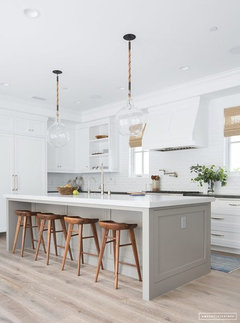When it comes to kitchen design, the kitchen island stands out as a multifunctional centerpiece. But why settle for a plain surface when you can elevate your space with beautiful kitchen island decorative panels? In this comprehensive guide, we’ll dive deep into the world of decorative panels, exploring their benefits, types, installation options, and design inspirations. From my personal experience as a kitchen enthusiast, I have witnessed how the right choice can transform an ordinary kitchen into an extraordinary one. Let’s get started!
Understanding Kitchen Island Decorative Panels
Kitchen island decorative panels are designed to enhance the aesthetic appeal of your kitchen island. They can be made from various materials ranging from wood to glass, and they serve both functional and decorative purposes. Whether you are looking to add a touch of elegance, incorporate a rustic charm, or simply want to cover unsightly surfaces, decorative panels can make a significant impact.
The Benefits of Decorative Panels
- Aesthetic Appeal: Decorative panels add a splash of color and texture, enhancing the overall look of your kitchen.
- Concealment: They provide a way to hide plumbing and electrical components while maintaining a polished look.
- Customization: With various materials and styles available, you can tailor your kitchen island to suit your personality and home decor.
- Increased Property Value: An aesthetically pleasing kitchen can increase the market value of your home.
Types of Kitchen Island Decorative Panels
1. Wood Panels
Wood panels bring warmth and texture to your kitchen space. They can be used in various finishes, from distressed to polished, and can be painted or stained to match your decor.
Pros and Cons of Wood Panels
| Pros | Cons |
|---|---|
| Natural and warm aesthetic | Can be prone to scratches and dents |
| Versatile in design | Requires maintenance to prevent warping |
| Easy to customize | May not fit modern styles |
2. Laminate Panels
For a more budget-friendly option, laminate panels offer a wide variety of colors and textures. They are durable and easy to clean, making them practical for busy kitchens.
Pros and Cons of Laminate Panels
| Pros | Cons |
|---|---|
| Budget-friendly | Less durable than solid wood |
| Wide range of designs | Can look cheap if not chosen wisely |
| Easy to install | Limited lifespan compared to other materials |

3. Stone Panels
Stone panels, such as granite or quartz, provide a luxurious feel. They are highly durable and can withstand heat and stains, making them perfect for kitchen environments.
Pros and Cons of Stone Panels
| Pros | Cons |
|---|---|
| Highly durable and heat-resistant | Expensive compared to other materials |
| Luxurious finish | Heavy materials can be difficult to install |
| Low maintenance | Requires professional installation |
4. Metal Panels
Metal panels can impart a sleek and modern look. Stainless steel is popular for its contemporary aesthetic and durability, while copper can add a touch of warmth and elegance.
Pros and Cons of Metal Panels
| Pros | Cons |
|---|---|
| Modern and chic appearance | Can show fingerprints and scratches |
| Durable and heat-resistant | Can be expensive |
| Easy to clean | Requires professional installation for some types |

Choosing the Right Decorative Panel for Your Kitchen Island
When choosing a decorative panel for your kitchen island, consider the following factors:
1. Style of Your Kitchen
Consider the overall style of your kitchen. Is it modern, traditional, or farmhouse chic? Your choice of panel should complement the existing aesthetic.
2. Functionality
Think about how you use your kitchen island. Do you often prepare meals, or is it primarily for social gatherings? The type of panel you choose should be durable and easy to maintain.

3. Budget
Determine your budget beforehand. While some materials like wood can be cost-effective, others such as stone can be a significant investment.
4. Installation Process
Some decorative panels may require professional installation, while others can be a DIY project. Assess your skills and resources before making a decision.

DIY vs. Professional Installation: Which is Right for You?
Deciding between a DIY approach or hiring a professional depends on your experience level, the complexity of the panel, and the materials used. Here’s a quick comparison:
DIY Installation
- Pros: Cost-effective, rewarding, and allows for creative control.
- Cons: May require specialized tools and skills, risk of errors.
Professional Installation
- Pros: High-quality results, minimal risk of damage.
- Cons: Higher cost, less personal involvement in design choices.

Design Ideas for Kitchen Island Decorative Panels
To inspire you further, here are some innovative design ideas for your kitchen island decorative panels:
1. Shiplap Wood Panels
Shiplap panels offer a rustic charm that works wonderfully in farmhouse-style kitchens. Consider painting them in a soft, muted tone for a fresh, airy feel.

2. Geometric Patterns
For a modern twist, opt for panels with geometric designs. These can be achieved with wood or laminate and can add a touch of sophistication to your kitchen.
3. Vintage-Tiled Panels
Using decorative tiles can create a stunning focal point. Consider vintage or Moroccan tile designs for an eclectic look.

4. Glass Panels with Backlighting
Glass panels with LED backlighting can give your kitchen island a contemporary edge and can be customized with various colors and designs.
Maintenance Tips for Kitchen Island Decorative Panels
To keep your decorative panels looking their best, follow these maintenance tips:
1. Regular Cleaning
Use a gentle cleaning solution and soft cloth to wipe down your panels regularly. Avoid abrasive cleaners that can damage the surface.
2. Immediate Stain Removal
For spills and stains, clean them up immediately to prevent any lasting damage.
3. Maintain Humidity Levels
For wood and laminate panels, maintaining proper humidity levels in your kitchen can prevent warping and cracking.
Frequently Asked Questions (FAQs)
1. What is the best material for kitchen island decorative panels?
The best material depends on your personal style, budget, and functionality needs. Wood offers a warm look, while metal provides a modern touch.
2. Can I install decorative panels myself?
Yes, many decorative panels can be installed by homeowners, especially laminate and wood options. However, for more complex materials like stone, professional installation is recommended.
3. How do I maintain my kitchen island decorative panels?
Regular cleaning with gentle solutions, immediate stain removal, and proper humidity control for wood are essential for maintenance.
4. Are decorative panels worth the investment?
Absolutely! Decorative panels can significantly enhance the aesthetic appeal of your kitchen and can increase your home’s resale value.
Conclusion
Choosing the right kitchen island decorative panels can transform your cooking space into a functional and stunning masterpiece. With a plethora of options available, you can select the perfect style that reflects your personality and complements your home. Embrace the exciting possibilities of decorative panels, and enjoy the process of creating a kitchen that you will love for years to come!